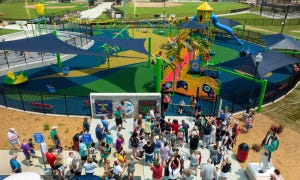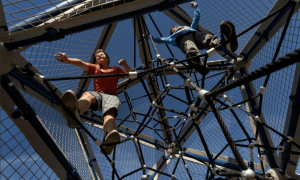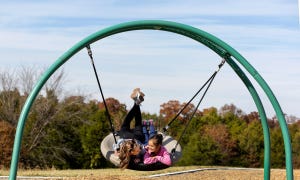This is the fourth post in a nine-part series on the benefits of Outdoor Fitness Parks. It is based on the research and information found in Outdoor Adult Fitness Parks™: Best Practices for Promoting Community Health by Increasing Physical Activity, published by PlayCore. Request a copy of the complete guidebook to help you plan the perfect fitness park.
GameTime began offering outdoor fitness equipment in the 1960s and helped pioneer the modern outdoor fitness park movement in the 1980s. We continue to innovate and expand research, products, and training to help communities provide useful and fun ways for adults to achieve better health and wellness.
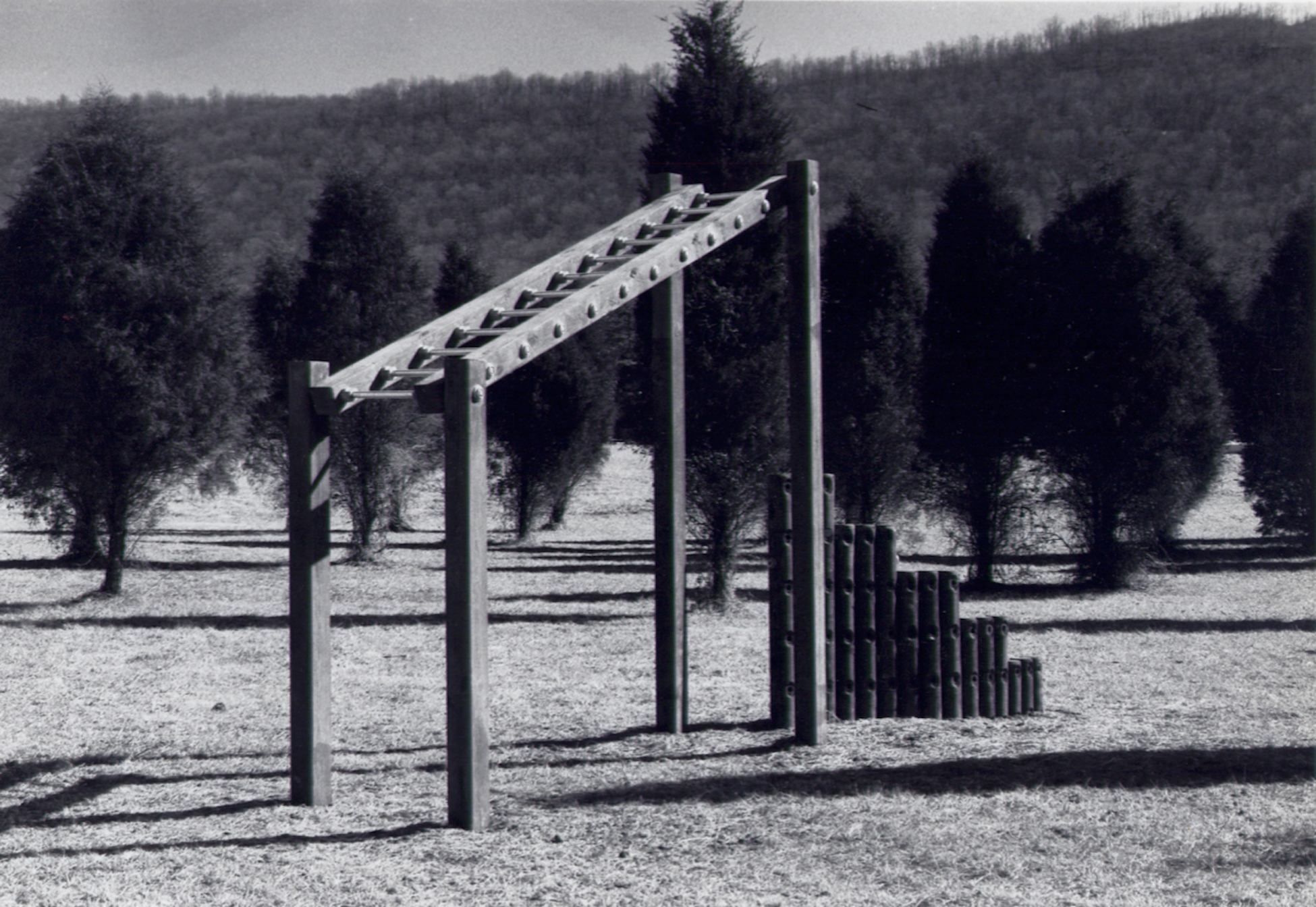
Early outdoor fitness trainer developed by GameTime (circa 1960)
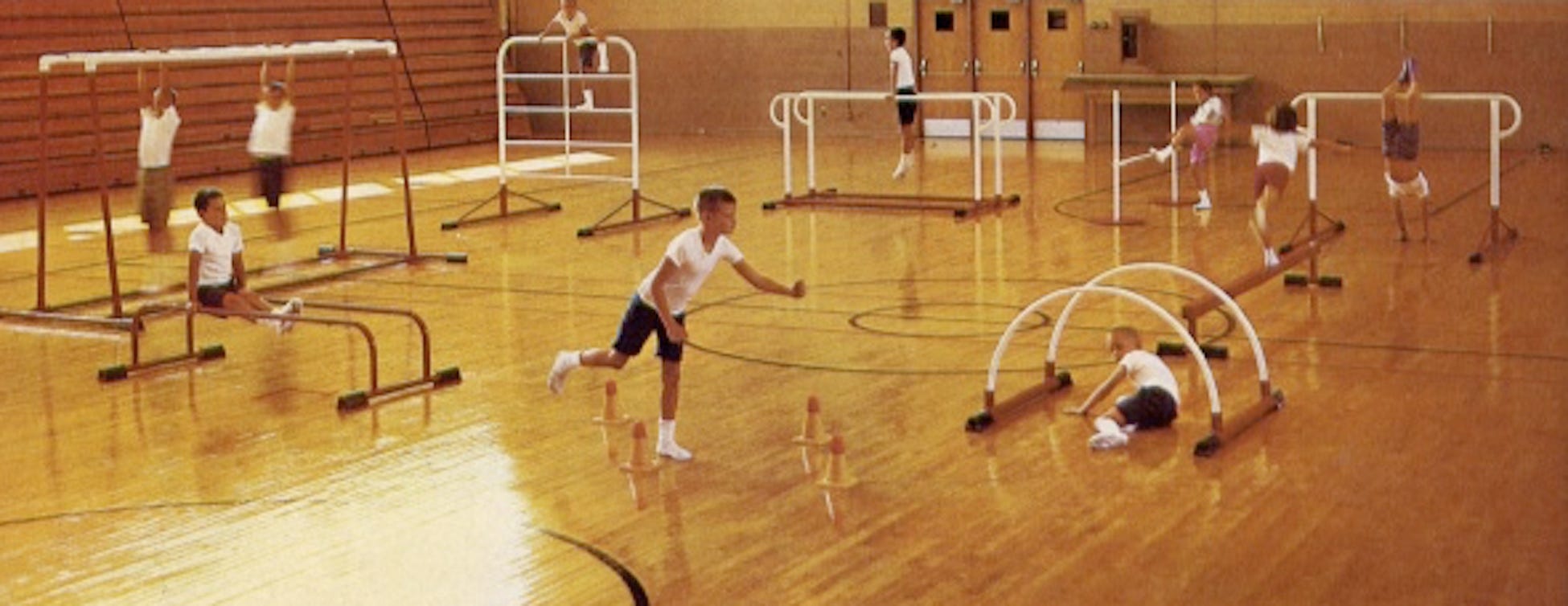
Portable outdoor fitness equipment designed by GameTime for use outdoors or indoors (circa 1965)
But outdoor fitness is not a new phenomenon. Throughout human history, people walked from place to place, lifted heavy things, and moved their bodies in natural, functional ways as they adapted to their surroundings and circumstances. As society turned to modern technologies and reduced the need for physically-demanding labor, the amount of regular physical activity declined.
The Start of a Movement
Georges Hebert–a French naval officer and physical educator–sought to change that in the early 20th century. He looked to the past, specifically competitive activities, to create a natural method of exercise outdoors. Often seen as the father of the modern parkour movement, Hebert instructed individuals to walk, run, jump, throw, lift, defend, and swim in outdoor terrains that covered up to a mile. Many of his methods are still used today among outdoor fitness enthusiasts, and provide a basis for modern research and best practices for outdoor exercise.
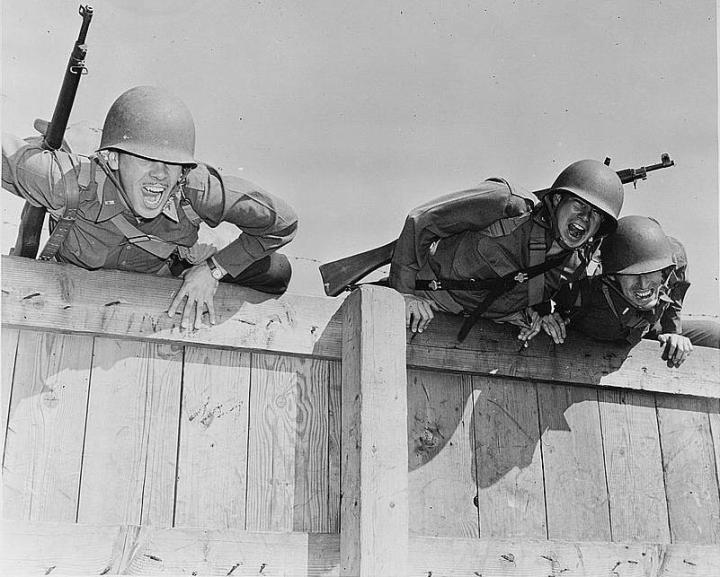 Another driver of the outdoor fitness movement in the United States is the various branches of the military. At the advent of World Wars I and II, many recruits and draftees were not physically prepared for the rigors of warfare. Experts created training programs designed to improve muscular strength and cardiovascular endurance, primarily in outdoor training settings.
Another driver of the outdoor fitness movement in the United States is the various branches of the military. At the advent of World Wars I and II, many recruits and draftees were not physically prepared for the rigors of warfare. Experts created training programs designed to improve muscular strength and cardiovascular endurance, primarily in outdoor training settings.
In the 1950s, a study declared many of America’s children as less fit than children in other countries. A former military general, President Eisenhower, issued an Executive Order to form the President’s Council on Youth Fitness. With a push from the executive branch of the US government, many organizations followed the lead to educate the public about the need for regular physical activity.
The American Health Association, the American Medical Association, and the American College of Sports Medicine worked to provide evidence-based research on the benefits of exercise for children and adults.
Community-Led Fitness
In the 1960s, communities began to create walking and jogging paths in parks and green spaces. Swiss architect Erwin Weckerman designed the first modern fitness trail. Inspired by the work of Georges Hebert, it included stations along a path where people would stop to engage in various exercises. By the 1970s, much of the United States population was aware of the need for regular physical activity. Hiking, jogging, swimming, other forms of outdoor recreation saw a marked increase in popularity and frequency.
In 1980, Parcourse leveraged the many outdoor fitness movements of the past to create an improved model of Weckerman’s fitness trail. It installed permanent fitness equipment along a jogging trail, and each piece of equipment included usage instructions for different levels of fitness: starting, sporting, and championship.
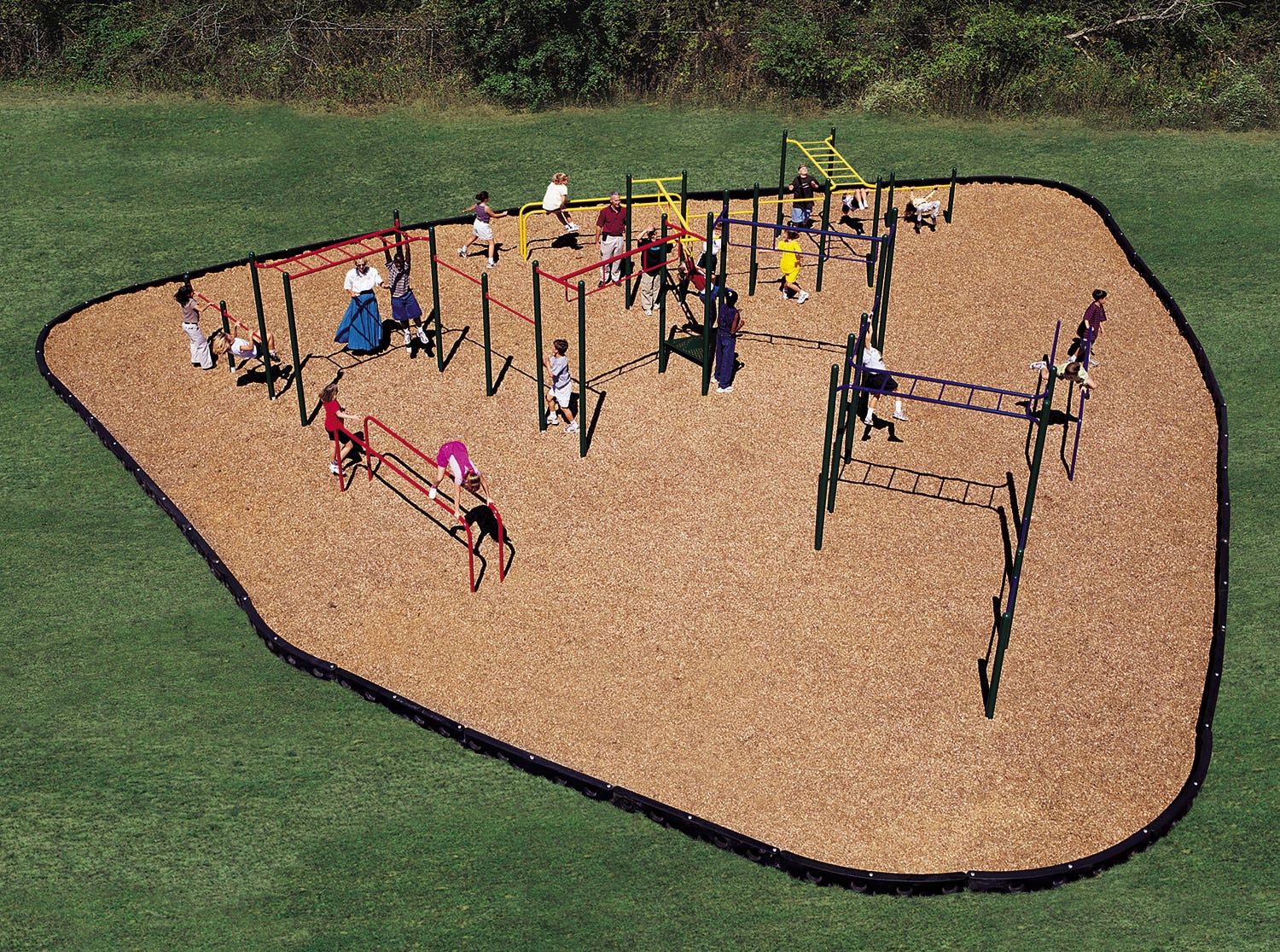
FitKid, developed in the 1990s by GameTime, brought outdoor fitness for children into the mainstream
GameTime brought the Parcourse system to the United States and began work to advance outdoor fitness opportunities. In the 1990s, GameTime introduced FitKid, a fitness system for children ages 5 to 12. Over the past two decades, we designed multiple fitness systems and products, including GTfit, THRIVE, and Challenge Course.
We continually seek to create products and services to meet the unique needs of people of all generations, abilities, and fitness levels.
The Benefits of Outdoor Fitness
Today, the need for outdoor fitness is well-established, and a study from Leisure-Net solutions found a majority of adults prefer to exercise outdoors instead of an indoor facility. Other studies continually show people who take their workout outdoors enjoy the activity more and intend to engage more frequently.
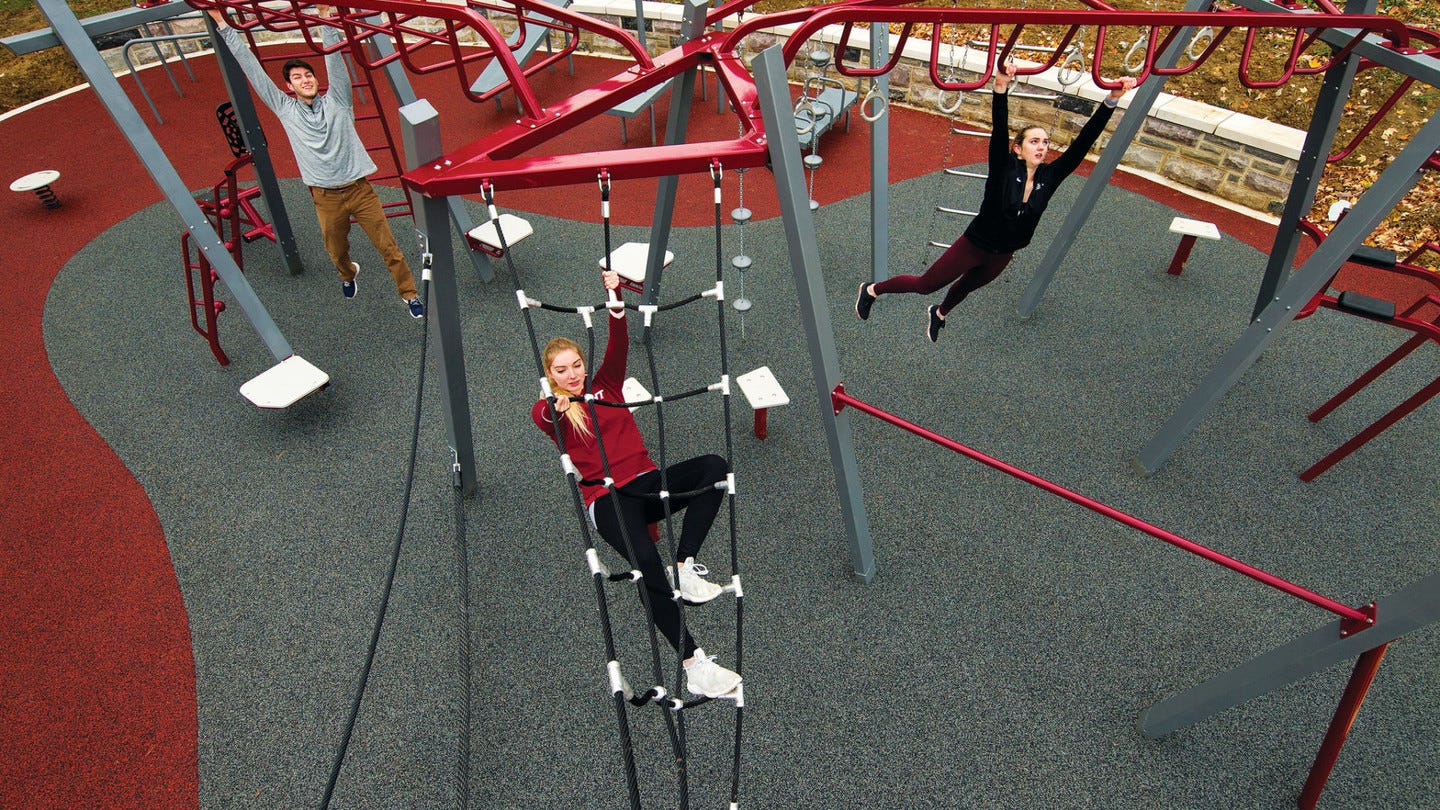
Modern-day outdoor fitness equipment, like THRIVE, is designed to help adults perform a full-body workout in a compact space
One of the most common outdoor fitness activities is walking. Outdoor walkers report better moods and intent to maintain a regular walking schedule than those who walk indoors. And one study found people who walk outdoors usually walk at a faster pace, but report the perceived level of effort was lower. Being outdoors is an enjoyable experience that makes exercise more enjoyable.
Here are some of the many evidence-based health benefits of outdoor exercise:
- Improved mental well-being and physiological health
- Disease prevention
- Improved adherence to regular exercise
- A feeling of revitalization and positive enjoyment
- A decrease in tension, confusion, anger, and depression
- Increased energy
- Greater levels of satisfaction
- A higher level of physical activity among older adults
- Access to green environments
Make Outdoor Fitness a Priority
If you are ready to bring the benefits of outdoor fitness to your community, contact the GameTime fitness expert in your community. They can help you identify a great location in your community, select the right equipment, and provide programming to help users maximize their workout experience.


